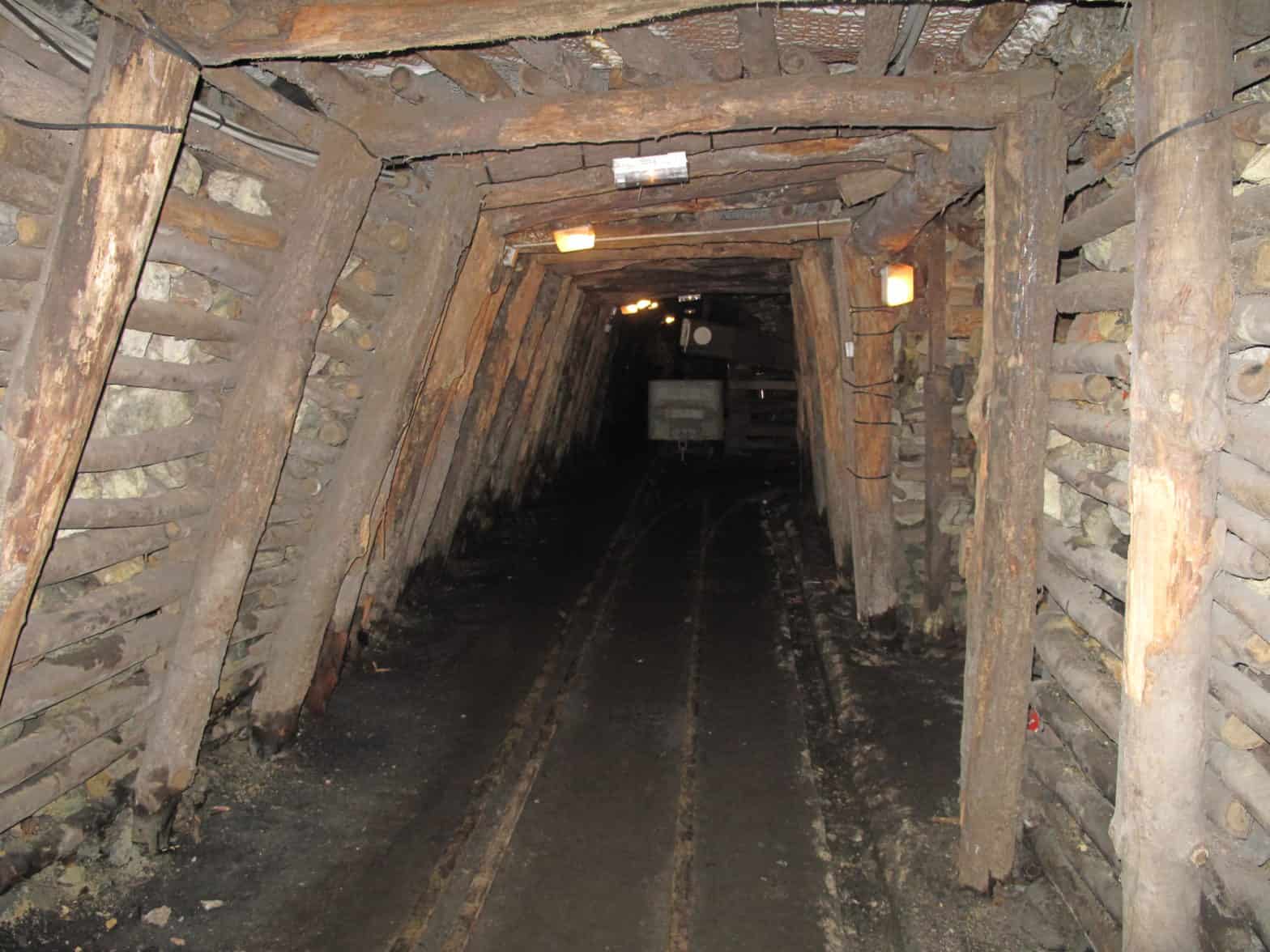Table of Contents
Underground Mining. It is one of humanity’s oldest and most impressive engineering activities, extracting an ore or mineral from many hundreds of feet deep underground. From the days of laborers toiling deep inside narrow, rickety and ill-supported tunnels using crude pickaxes and with only candlelight to guide them in their quest for gold, silver, copper or other precious materials, underground mining has come a long way.
*This post may contain affiliate links. As an Amazon Associate we earn from qualifying purchases.
Today, heavy machinery and vastly improved practices and techniques have surpassed and supplanted the ancient and crude techniques of old, and as a result, the industry has grown to become much safer, and much more profitable. In this article, we will discuss what underground mining is, what its hazards are and what it does for today’s modern world.
What Is Underground Mining?
Underground mining, as the name would imply, is the technique of mining into and under the ground for commercial purposes, usually in the pursuit of valuable ores or minerals. In general, the technique is employed when surface mining, or rather ‘strip’ mining would be prohibitively expensive. For example, there are mines in South Africa that have tunnels more than two miles deep to reach veins of gold deep within the earth’s crust!
But because it would be prohibitively expensive and impossible to dig a hole that deep, it would be far cheaper and easier to tunnel simply through the rock and earth, rather than to remove it entirely.
There are many types of underground mines, depending on a wide variety of factors. These factors range from the ore or mineral being mined to the size and dimensions and depth of the vein or deposit, to the hardness or softness of the surrounding rock. A given mine could be radically different in terms of size or layout from the next, and ultimately the size, depth and overall shape of the mine depend entirely on the dimensions of the ore or mineral deposit itself. Most mines have different layers or levels, allowing access to different ore veins or different parts of the same deposit.
A common feature across all underground mines is some sort of hoist or elevator for ore to be extracted out of the mine. Spiral ramps are also a common feature, allowing for personal and heavy machinery to access quickly different levels of the mine or to evacuate quickly in case of an emergency. Rock or ore crushers are often used deep within the mine, allowing harvested ore to be first pulverized for easier transport to the surface.
Mining Types
One of the most common forms of underground mining would be longwall mining, most commonly associated with coal. The majority of coal seams tend to be very wide and flat and wedged between two separate strata of rock. As the name implies, the ore is cut or ‘shaved’ one layer at a time, allowing the vast majority of the ore to be efficiently recovered. ‘Room and Pillar’ mining is similar, where the ore itself helps to form the support structure for the mine.
‘Cut and Fill’ mining is also a relatively common technique and is useful when deposits are narrow and tall rather than flat and wide. This method works by drilling an access ramp adjacent to the ore deposit from the surface down to the lowest point of the deposit. Miners then drill through the top of the deposit to the bottom, allowing the ore to be collected from the bottom for transport. Finally, there is Blast mining, an old-school technique which as the name implies involves blasting the ore out of the vein one section at a time.
A Brief History
Underground mining has a very long history, dating back thousands of years. Unskilled peasants and laborers would mine by torchlight in conditions that today would be considered hazardous and barbaric, and what equipment there was would be primitive and crude by today’s standards. One of the earliest examples of underground mining dates back to ancient China where coal was dug out from early shaft mines to be used for metalworking. In Roman times, underground mining was conducted in Britain and elsewhere in the pursuit of metals such as copper, nickel, tin, and iron.
And in more recent history, numerous boom towns sprang up all over the western United States as flocks of Miners from all across America and abroad came in pursuit of wealth and riches. The processes involved in underground mining remained relatively unchanged until the advent of the Industrial Age, where steam engines, electricity, and advances in metallurgy and geology have allowed for the possibility of greater yields and more efficient mining practices. Today, while underground mining is still laborious and dangerous, it is both extremely productive and extremely profitable.
Is There a Need for Underground Mining?
Over the decades, the demand for resources and raw materials has grown dramatically. Iron for construction, coal, and uranium for electricity. Rare earth metals for electronics and consumer goods, and precious metals and minerals such as gold, silver, and gemstones for luxury goods. Most of the yearly output and yields for these raw materials are harvested not from surface mines or open pit mines.
They are from ore veins and seams deep within the earth in underground mines. Without underground mining, much if not all the modern world would simply grind to a halt, whether it be from a lack of coal to fire power stations, a lack of steel to construct buildings, or a lack of rare earth metals to create modern conveniences for everyday life.
The Human Toll
The cost of underground mining is not cheap. While one could argue that the endeavor is expensive in terms of dollar amounts, others could argue that the human cost of this mining should not be taken lightly either. Each year there are hundreds if not thousands of deaths related to mining, the majority of which are in the developing world in countries where lax safety standards and a low value placed upon human life are the norms. Many of these deaths occur in China, where the lack of safety oversight and a high demand for coal have led to a sharp increase in mining-related fatalities.
Nations in the developed world aren’t immune from danger and disaster either. For example in 2010, a methane explosion in an underground mine in West Virginia led to the tragic deaths of twenty-nine workers. That same year, a mining disaster in Chile left 33 miners trapped for over two months deep underground until they were rescued.
Long-term health is another factor to keep in mind. Continuous exposure to the mineral dust created by mining rock and ore can lead to a host of respiratory issues later in life, such as lung cancer, pneumococcal disease and the dreaded ‘black lung’ often associated with coal mining. Fumes from welding equipment, heavy machinery, and often the mined materials themselves can be hazardous and detrimental to a person’s health. Loud sound from mining equipment can lead to hearing loss, and physical injuries both minor and major are common.
Radon is also an ever-present danger in some mines, as it is easily inhaled and is a major contributor to lung cancer. As well, both natural gas deposits and methane are problems in deep mines as they can be potentially ignited by people or machinery and cause explosions that can lead to a loss of life.
The Environmental Toll
While the human toll in many instances may fly beneath the radar so to speak, the impact of underground mining on the natural environment can be far more noticeable. Like with open pit mines, one of the problems associated with this mining is water pollution, especially in older or abandoned mines. As rainwater and groundwater flow into and fill an old mineshaft, chemicals and contaminants present in the now-exposed rock faces begin to leach out and contaminate the surrounding water table.
Mine tailings, i.e., the leftover rock and debris as a result of mining can also potentially be hazardous. For example, a now-closed lead mine in Oklahoma has left behind thousands of tons of still-toxic mining waste, which remains a problem to this day. In regards to coal mines, underground fires are a potential danger. For example, the city of Centralia, Pennsylvania was almost entirely abandoned due to a coal fire that has burned beneath the town for over five decades.
Interesting Facts about Underground Mining
- The oldest known mine in the world is the Ngwenya Mine, located in modern-day Swaziland. The paleolithic humans who once lived there mined hematite, with which they used to make red ochre. Archeological evidence indicates that the mine is roughly 43,000 years old.
- The deepest mine in the world is the TauTona gold mine in Carletonville, South Africa. The deepest tunnels currently reach 2.4 miles into the earth’s crust, with plans to dig even deeper in the works.
- The largest and most productive underground mine in the world is the Kiruna Mine, located in northern Sweden. It produces a staggering 26 million metric tons of iron ore annually.
Conclusion
It should go without saying that underground mining is a vital part of the world economy, despite its impact on the natural environment and its hazards to human life. Many nations have laws and regulations mandating safe working conditions, and while this mining is extremely dangerous and physically taxing, technology continues to improve all the time that will allow miners to do their job more safely and productively.

